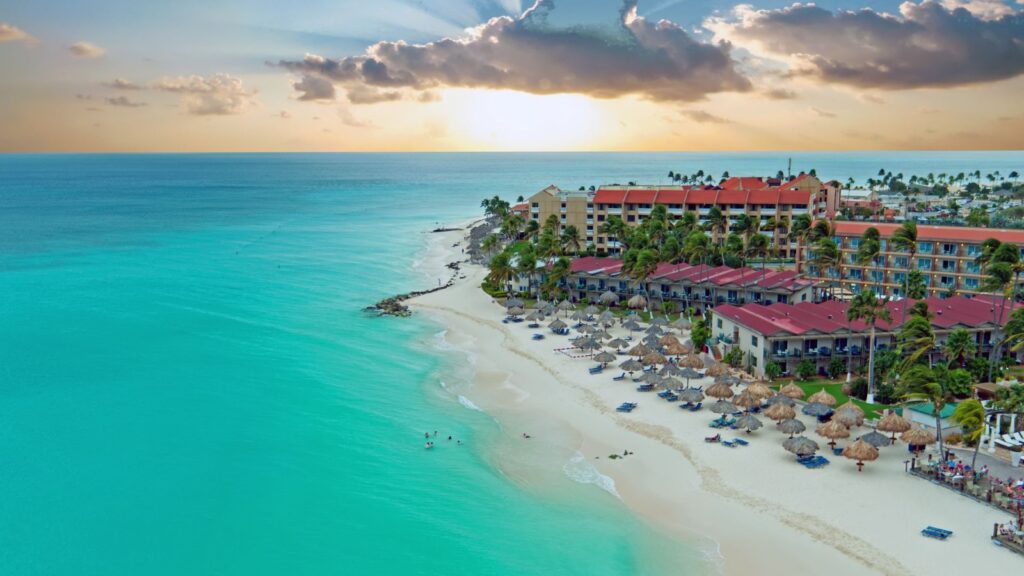Beyond its stunning landscapes and warm hospitality, Canada is rich with fascinating facts. Explore ...
Travel Guides
The Caribbean attracts over 30 million visitors a year with its sun-soaked beaches, turquoise waters, and rich mix of cultures—but choosing the right time to go can make or break your trip.


While sunshine is common year-round, not all months offer the same experience. Weather, prices, and crowds shift with the seasons. In this guide, you'll find a clear breakdown of the best time to visit the Caribbean—depending on what kind of trip you're after.
The best time to visit the Caribbean depends on your interests, but generally, the ideal period is between December and April, when the weather is sunny, warm, and dry. However, travelers looking to avoid crowds or seeking lower prices might prefer the shoulder months (May, June, or November).
The Caribbean experiences two main seasons, each offering unique attractions. Here's a detailed breakdown to help you choose based on your preferences:
Here's a quick monthly guide:
The Caribbean is famous for its lively culture, amazing festivals, and unforgettable celebrations. Throughout the year, each island lights up with events showcasing local traditions, delicious food, and music that moves your soul. Here are some of the most exciting events to add to your calendar for 2025:
San Sebastián Street Festival transforms Old San Juan into a nonstop party, packed with lively salsa rhythms, giant puppets, and irresistible Puerto Rican street food. Known as "SanSe," it's Puerto Rico’s biggest cultural bash and a spectacular showcase of island pride.
This festival draws over 30,000 participants annually with massive street parades, energetic soca music competitions, and elaborate handmade costumes costing thousands of dollars each. The celebration peaks at J'ouvert—a pre-dawn party where revelers cover themselves in mud, paint, and powder, dancing in the streets until sunrise.
Colombia's largest festival lights up the country’s Caribbean coast with four days of nonstop dancing, lively music, and vibrant street parades. Its signature event is the Battle of the Flowers parade, famous for its spectacular floats and festive costumes.
The Virgin Islands Jam Fest brings hundreds of music fans to St. John’s Windmill Bar, a popular spot with amazing ocean views. The festival’s relaxed atmosphere offers a mix of reggae, hip-hop, country, and contemporary performances, letting attendees enjoy music up close in a casual island setting.
Jamaica Carnival is a cultural celebration that completely transforms Kingston into a vibrant, high-energy festival of music and dance. For one week, the streets pulse with life as thousands of revelers take over the city, decked out in bright feathers, glitter, and dazzling costumes.
St. Maarten Carnival blends Dutch, French, and Caribbean culture into one big party with street parades and delicious food. Highlights include the Grand Carnival Parade, concerts featuring local and international artists, and tasty dishes from the culinary capital of the Caribbean.
The Soul Beach Music Festival in St. Maarten offers six days of vibrant beach parties, live concerts, and comedy shows. With lively block parties, stylish evening events, and sunny seaside gatherings, it's one of the Caribbean's best festivals for music lovers and beachgoers alike.
The Aruba Summer Music Festival is an annual event featuring top Latin and Caribbean artists performing salsa, merengue, reggaeton, and soca music. Held in Oranjestad, the festival attracts music lovers with concerts, delicious local food, and an upbeat island atmosphere.
The Saint John Festival celebrates two important historical events: the end of slavery (Emancipation Day) in the Virgin Islands on July 3 and U.S. Independence Day on July 4. People gather to celebrate their heritage through music, dancing, colorful parades, and delicious local foods.
This popular festival transforms the island into a lively hub of music, dance, and cultural expression, featuring festive parades, live concerts, and an array of local culinary delights. The festivities kick off with the Opening Night Jump-Up, a street parade where locals and visitors dance through the streets.
"The Caribbean’s Greatest Summer Festival" celebrates the island’s past. The festival commemorates the emancipation of enslaved people in 1834. The festivities span nearly two weeks, featuring parades, live music, dance performances, and beauty pageants.
Crop Over Festival is a week-long celebration marking the end of the sugarcane harvest, filled with lively calypso competitions, bustling markets, and nonstop street parties. The highlight is Grand Kadooment Day, when thousands dance through Bridgetown's streets dressed in colorful costumes to soca rhythms.
Originating in the early 19th century, enslaved Africans used their limited holiday time to recreate traditional festivals from their homelands. Today, Junkanoo features vibrant street parades with elaborate costumes, rhythmic music from cowbells, goatskin drums, and brass instruments, as well as spirited dancing.
The Caribbean might seem expensive, but you can still enjoy paradise on a budget by choosing the right time to visit.
Traveling during the off-peak season (July–October) or the shoulder season (May, June, November) can significantly reduce costs on accommodation, flights, and activities.
This is the cheapest time to visit, but it's also hurricane season, especially from August to October. Prices drop considerably, with major discounts on hotels and flights. Crowds are fewer, and beaches are quieter, but you'll need to watch the weather forecasts closely.
Typical costs during off-peak season:
These months offer the best value with fewer tourists, lower hotel rates, and generally good weather. Prices are slightly higher than off-peak but still affordable compared to high season.
Typical costs during shoulder season:
To truly experience the Caribbean's diverse offerings, a trip of 7 to 10 days is ideal. This duration allows you to explore multiple islands, immerse yourself in local cultures, and enjoy both relaxation and adventure.
If you're focusing on a single island, 5 to 7 days can suffice to appreciate its unique attractions and unwind on its beaches.
The Caribbean boasts a plethora of stunning islands, each offering its own unique charm. Here are some top destinations to consider:
For most Caribbean destinations, U.S. citizens do not need a visa for short visits. A valid U.S. passport is generally enough to enter popular islands like Jamaica, the Bahamas, Aruba, Barbados, St. Maarten, and Turks & Caicos for stays ranging from 30 to 90 days.
Entry requirements may vary slightly between islands, so it’s always best to double-check with the official government tourism site or the U.S. State Department before you go. While visas are usually not necessary, your passport should have at least six months' validity from your travel date, and you may be asked to show proof of a return ticket or sufficient funds for your stay.
Staying connected in the Caribbean is fairly easy, especially in popular tourist areas. Most hotels, resorts, and cafes offer free W-iFi, though connection speeds and reliability can vary from island to island. Public Wi-Fi hotspots are common in busy areas, but coverage outside main towns may be limited.
For a more stable and flexible option, many travelers now rely on eSIM technology, which lets you connect to mobile data networks without needing a physical SIM card. You can get an international eSIM before your trip and activate it in seconds—ideal if you're hopping between islands.
Here’s a clear breakdown of the best eSIM Caribbean options to help you stay online:
| Provider | Pros | Cons | Price | |
| Holafly | Unlimited data, 24/7 customer support | No data sharing, data-only (no calls or texts) | From $6.90 | |
| Airalo | Broad coverage, easy eSIM activation | Limited unlimited data options, no live support | From $5 (1GB, varies by country) | |
| Flow (Local) | Local rates, strong coverage in Jamaica, Curaçao, and Grenada | Must purchase in person, ID required, may have complex activation | Prices vary; in-store only | |
Beauty is subjective, but St. Lucia often tops the list with its lush mountains, volcanic beaches, and iconic Pitons. It’s perfect for both romantic getaways and nature lovers.
Cruise lines track storms closely and will change course or cancel ports to keep passengers safe. You won’t sail into a storm, but travel insurance is smart just in case.
Anguilla and the Cayman Islands are widely considered among the safest, with low crime rates and strong tourism infrastructure. Always take normal precautions, just as you would anywhere.

